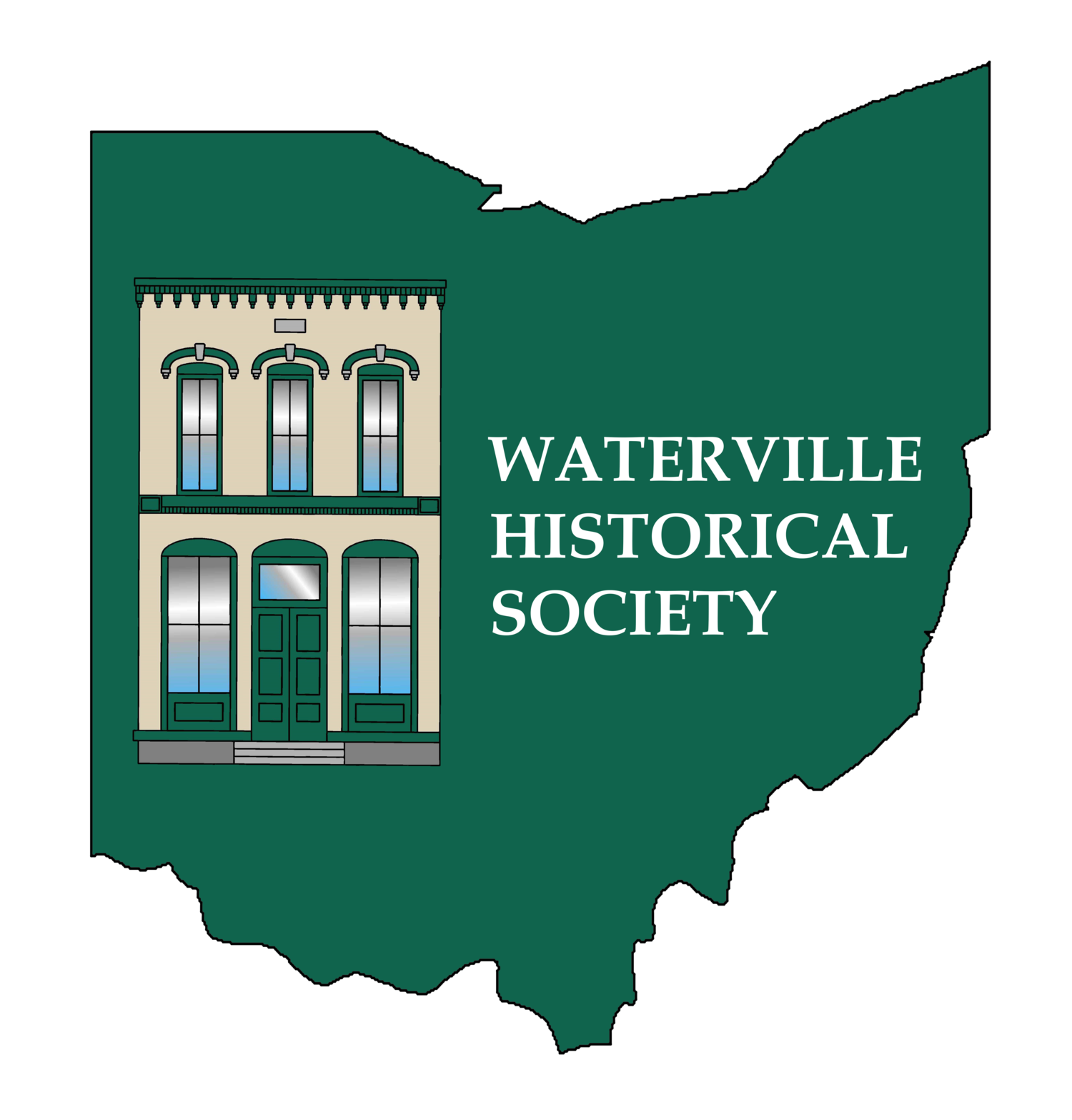The Saga of Peddlers' Alley
A blacksmith shop is said to have been built around 1840 on lot 84 on Wood Street(Farnsworth Road.) The shop where the blacksmith worked was called a smithy. Charles Graf was not the first blacksmith there as he was born in 1859 in Germany and came to America at the age of fourteen. Aden/Adon Cobleigh paid taxes of $100 between the years of 1854-57 on this property and was probably the first blacksmith. He died on April 12, 1863 at the age of 72 and is buried at the Wakeman Cemetery. On the 1860 Waterville Township Census his son, William was listed as a blacksmith along with Andrew Dutch and Dennis Mahan also listed as blacksmith living with him. Voil Downs(1896-1976) in his Anthony Wayne Standard weekly articles, “Did You Know?” said that Michael Tyler had his brick blacksmith shop built in 1867 on lot 84 by the Shufelt Bros, which was later the Grafs’ Machine Shop. The History of Toledo and Lucas County, by Clark Waggoner, published in 1888, mentions Asher Demuth, blacksmith on Wood Street, who succeeded Michael Tyler in 1884 working as a blacksmith. Charles Graf was probably the next blacksmith in that building that we know about. On the building in an early photo it states “C.L. Graf & Son, Auto repairing and Machine work, Blacksmithing, Carriage and Wagon Works.” Their stationery read, “Carriage Ironer and Horse Shoer: Repair Work a Specialty.” The Graf family lived across the street and would come over during the night to keep the fires burning in the blacksmith forge. Next door there was a brick building which in a ca1920 photo states “The Brick Garage” with a gas pump outside, a machine (auto) shop. Charles Graf may have expanded his building when his son Albert came home from WWI in 1920.
In 1895 Charles Graf was commissioned to make a prototype wagon which incorporated a front end that turns like an automobile rather than a straight axle. The inventor received a patent on this and Graf may have made and sold this type of wagon. The model wagon now is housed in the Sargent House museum. During WW I, to keep up with modern times Charles Graf made the first motorized school bus, made with a wooden box frame and door mounted on a model T truck frame. You can see the picture of the school bus on page 99 in the “Waterville” book by Arcadia and available from Waterville Historical Society.
In the 1950s the Shop of Siebert Company leased the Graf building to customize Ford vehicles into ambulances and stretch limousines. In 1961 they expanded to Whitehouse at the corner of Route 64 and Cemetery Road. They left the area in 1964 for Michigan.
1962 Principal Business Enterprise moved to the Graf building and built additions to it. They made slippers from polyurethane that was cheap and easy to wash. At first they were known as Pillow Peds and later known as Pillow Paws. These were used for patients in hospitals and could be disposable. They were here about 14 years before looking for a larger facility in Perrysburg.
In 1976 Ferd Seipel and Ron Martin purchased the building and designed Peddlers’ Alley as a 16 store mall, restaurant and cocktail lounge, with shops inside and a brick walkway through the building. There were wrought iron gates for doors and glass doors in the winter. This was part of Waterville’s “Operation Old Town” restoration program. The blacksmith shop on the east side of building was the oldest part of the building and became the Restaurant. They just recleaned the bricks, walls and the old dark wooden ceiling. On January 4, 1977 Don and Lee Buckout from the Old Plantation Inn on River Road in Maumee opened Smedlap’s Smithy Restaurant and Tavern. He installed a spiral slide from the second floor down to the dining room which is still in use today. Many other proprietors ran the restaurant after the death of Don Buckout. The restaurant was closed December 2014. It was sold and now is the Cocina de Carlos which brings fresh Mexican food to the area. The name “Smedlap” was created by Don Buckout. No such person ever owned the blacksmith shop.
Some of the businesses that were in Peddlers’ Alley when it opened: The Totem Pole; The Tiffany Flower Shop; Graphics Limited; The Finishing Touch; The Time Piece; Waterville Outdoor World; Village Squire Barber Shop; The Kaleidoscope; The Needle’s Eye and Forever Yours Antique Shop to name a few.


